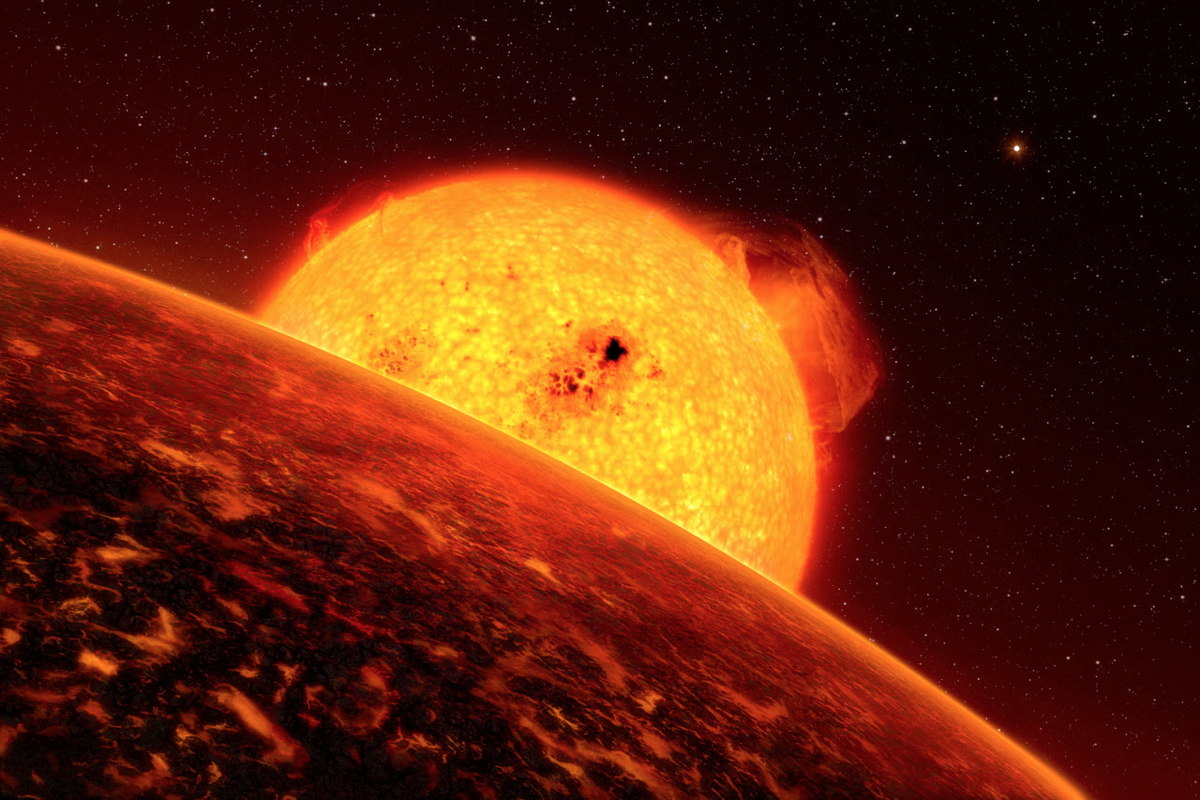6 Super-Fast Alien Planets May Be Skimming the Surface of Their Stars

Scientists have discovered a handful of strange alien worlds that appear to be locked in super-fast orbits around their respective stars, sending the planets whipping around their stellar parents at incredible speeds.
By using publically available observations by NASA's Kepler observatory, the scientists found approximately six planetary candidates with orbital periods of less than 12 hours, with some orbiting their parent stars in a mere four hours. If confirmed, these exoplanets will be some of the closest planets to their host stars ever seen.
Some of the potential planets have very short, four-hour orbital periods, new research conducted by Brian Jackson of the Carnegie Institution for Science reveals. Jackson presented the findings today (Oct. 8) at the annual meeting of the American Astronomical Society's Division for Planetary Sciences, held in Denver. [The Strangest Alien Planets (Gallery)]
"Most gas giant exoplanets with orbital periods less than or equal to a few days are unstable," Carnegie Institute of Science officials said in a statement unveiling the discovery. "This is due to decay in their orbits caused by the effects of their star's proximity. For rocky or icy planets, this disruption could bring them close enough to the star that the force of their own gravity can no longer hold them together in the face of the star's gravity."
Short period planets that are only a few times more massive than Earth may be detectable using ground-based facilities today because of their short orbital periods, scientists said. These kinds of alien planets, if common, would also be ideal targets for NASA's planned Transiting Exoplanet Survey Satellite (TESS) mission, researchers said.
NASA expects to launch the new planet hunter in 2017. The satellite is designed to use the transit method — observing small dips in light as a planet crosses in front of its parent star — to seek out alien worlds orbiting nearby stars. TESS will focus on finding Earth-size planets that could potentially support life.
Kepler, on the other hand, looked deeply into a specific patch of sky from its orbit around the sun to find new worlds. The $600 million mission launched in 2009, but its planet hunt unexpectedly ended earlier this year. The telescope's reaction wheels, used to maintain the spacecraft's position in space, are no longer able to keep Kepler pointing in the right direction.
Breaking space news, the latest updates on rocket launches, skywatching events and more!
This may not mark the of Kepler's science, however. The space telescope could help track asteroids or supernova explosions, scientists have said.
Since its launch, Kepler has found more than 3,500 planet candidates. Mission scientists expect that more than 90 percent of those findings will be confirmed as planets.
Follow Miriam Kramer @mirikramer and Google+. Follow us @Spacedotcom, Facebook and Google+. Original article on SPACE.com.

Miriam Kramer joined Space.com as a Staff Writer in December 2012. Since then, she has floated in weightlessness on a zero-gravity flight, felt the pull of 4-Gs in a trainer aircraft and watched rockets soar into space from Florida and Virginia. She also served as Space.com's lead space entertainment reporter, and enjoys all aspects of space news, astronomy and commercial spaceflight. Miriam has also presented space stories during live interviews with Fox News and other TV and radio outlets. She originally hails from Knoxville, Tennessee where she and her family would take trips to dark spots on the outskirts of town to watch meteor showers every year. She loves to travel and one day hopes to see the northern lights in person. Miriam is currently a space reporter with Axios, writing the Axios Space newsletter. You can follow Miriam on Twitter.

